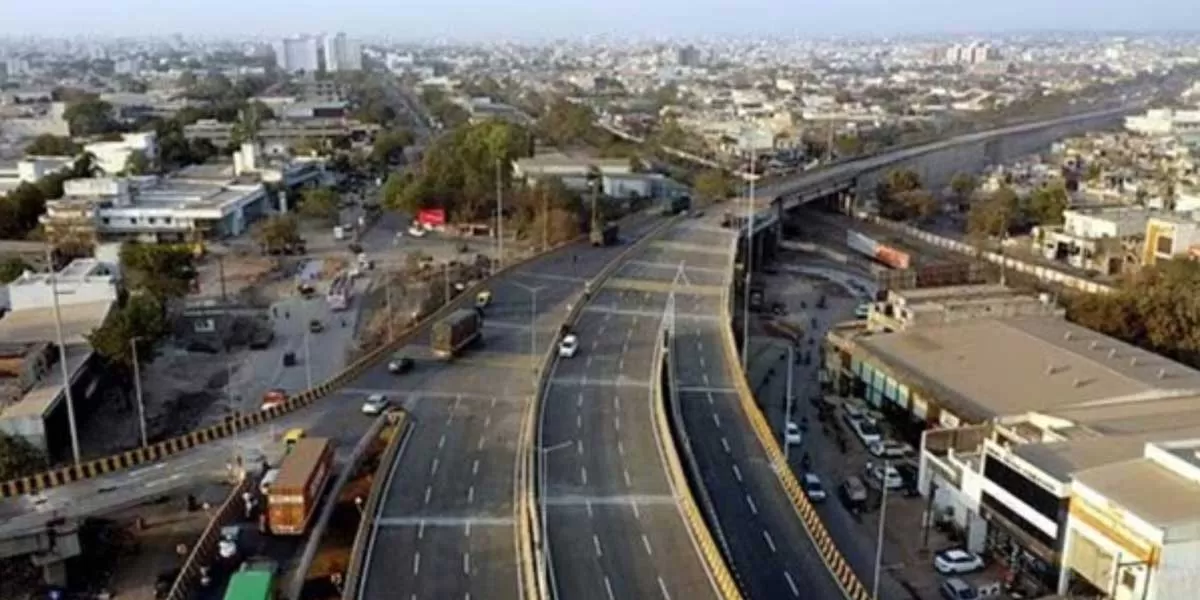From a paucity of projects to issues surrounding bidding, interacting with authorities, fee structures and more, six leading architects address the challenges the public sector presents.Dearth of projects“More than 90 per cent of the architecture in India is developer-driven; the government isn’t doing anything much,” says Sanjay Puri, Founder, Sanjay Puri Architects, noting that overseas, over half the projects are government or foundation-driven. “The value of government or foundation-driven projects lies in the fact that those agencies are more likely to prioritise sustainability while private developers typically only look at monetary aspects and building saleability.”Sometimes, you need to map a process to spur the creation of essential urban development projects, suggests Ayan Sen of Ayan Sen Architects Urban Designers and Planners. Two years ago, Sen saw the possibility of creating a linear green corridor at the edge of a canal. Canals are an integral part of the landscape of Kolkata but they were increasingly perceived negatively as their edges were unkempt places no one wanted to visit. “In conjunction with the Indian Institution of Architects, I organised a design hackathon among students to brainstorm ideas to develop and revitalise a 5-km stretch of canal. This fell within the jurisdiction of the chairman of the development authority (Housing Infrastructure Development Corporation). A DPR was drawn up and a Rs.150 million project was conceptualised and is now being implemented. Our work was appreciated and we went on to design a bridge and the landscape at the edge of the canal. We charged nominal fees for this extension to the conceptual ideation by students.”Poorly planned projects“By and large, our experience has been that private players know exactly what they want from projects by way of a pre-design brief for the project and programming while in the government and semi-government sectors, projects are not as clearly defined at the early stages, causing multiple midway changes,” says CN Raghavendran, Partner, CR Narayana Rao Architects. “It would help if projects were planned by a core committee that is well aware of the need.”Also, to speed up decision-making surrounding all aspects of a project, those involved in planning should be authorised to take appropriate and timely decisions, he adds.Continuance of governance“Continuance of governance is a concern,” says Vivek Singh Rathore, Design Principal, Salient Design Studio. “Why should a project of public interest that has been cleared by the Cabinet and/or finance department be called off just because of a change in the ruling party? Politics should not impact the creation of essential infrastructure.”In the last year alone, Salient Design Studio has experienced seven project failures owing to change of governments. “You spend a couple of years planning a project and when it is time to execute it, it is called off. Obviously, this causes a huge financial loss to the awardee,” points out Rathore. “The decision reversing the choice of Amravati as the capital of Andhra Pradesh is a good example of what the change in government can do to projects.”“When project timelines are limited, continuity isn’t a concern. But when projects stretch for too long, the stakeholder who is the prime decision-maker keeps moving,” notes Sonali Rastogi, Founding Partner, Morphogenesis.In the context of most urban projects in the government sector that are being run through the smart cities project, a laudable initiative for reviving many cities that were becoming derelict, Rastogi explains the lacuna in the current methodology. “Different bureaucrats might have different priorities within the same broad vision of a smart city,” she says. “One might prioritise roads, the next parks, a third digital infrastructure. A lot of useful projects then get underway but none get completed and the public simply does not feel the benefit. Also, those involved in the implementation suffer project delays.” “Currently, the smart cities mission is being implemented step by step, and these steps are too tiny to be visible and, hence, enthuse the public,” adds Rastogi. For instance, a project mandating the renovation of city routes might be worked on kilometre by kilometre, which doesn’t make a notable difference to the lives of people. So, while the chain of processes followed to implement smart city projects is accurate, from policy design to project conceptualisation to pilot designs and final project design, timelines need to be curtailed.Lack of transparency“Projects should be genuinely competitive,” says Rathore. For this to happen, he suggests making the project tender public in a transparent manner, which means publishing it in national journals and newspapers, not merely in regional publications. It would also help if a website is dedicated to publishing details of project notifications. Indeed, lack of transparency keeps a lot of good architects away from government projectsDelayed work ordersScott Knox, Studio Director of Design, Creative Group, rues delays in issuing work orders following bidding and believes it undermines good planning. “It is in bad faith for an authority in a PSU to ask a professional to produce drawings, specifications, cost estimates and make multiple presentations month after month before signing their contract,” he says. “This is typically under the guise of ‘trying’ to understand the project. This tactic is ‘trying’, but fundamentally this shifts the risk from the planning end of a project towards the construction end. The burden of this shift short-changes the planning process and hurts the project in terms of public-sector credibility and commercial-sector viability. This ultimately shows in the results.”Knox advocates a clear and timely bid process: “Announcement, receipt, review, selection and award in a fixed and transparent schedule.” In addition, commencing the project with the professional’s first payment and linking subsequent payments to each deliverable, and withholding a final payment with substantial completion.Trust deficitTo speed up the creation of infrastructure, Knox would like to see authorities place their trust in firms selected to deliver projects. For instance, he shares the example of the recently completed Kartarpur Terminal and Punjab-Pakistan corridor project, which the Creative Group has been involved with. “We designed and developed a 15-acre master plan, 28,000 sq m complex in five months. What helped was that our design-focused client (Land Ports Authority) raised process over politics by entrusting sitework decisions to our principal architect, Gurpreet Shah. All the stakeholders – Land Ports, Shapoorji Pallonji and the Creative Group – adopted a collaborative process that expanded the circle of trust.”Mono-focus on lowest costThere is a mono-focus on L1 (lowest cost) that is a challenge for firms bidding for railway, airport, metro and other infrastructure projects, according to Knox.“If the quality and completion of projects were only dependant on cost, the L1 system might be appropriate, but it’s not and never has been,” he explains. “The firm’s and individual’s direct experience in designing and building infrastructure projects is critical, not a luxury, especially as the project gains in scale and complexity. However, practically, the criteria ratio of technical qualifications to cost is almost 0:100, with quality on the losing side.”“L1 is not a criterion for getting good consultancy,” agrees Rathore.What are some of the disadvantageous outcome of the focus on L1?“An L1 bidder with minimal (and below) verifiable technical competency winning a bid for large-scale projects can create considerable financial and safety risks to users,” says Knox.“In the government sector, by and large, too much emphasis is placed on the cost of projects,” says Sen. “Design is considered but not exclusively, which is somewhat off-putting for architects wanting to do standout projects. The idea of creating unique contextual projects with minimum complication is the way ahead.”To eliminate this challenge, Knox recommends simple guidelines to verify the bidder’s qualifications, soliciting competitive bids and balancing the firm’s qualifications and bids. The criteria ratio may be 50:50, 30:70, or whatever split is reasonable given the project complexity, in deciding who to award the bid. “Simpler projects may do well even with a low qualification percentage,” he says. “However, complex projects, such as the redesign of railways in the heart of cities where expectations span from world-class stations to last-mile connectivity, require demonstrable qualifications.” “It would be more helpful for the government to fix standard fees and then evaluate the bids in terms of designs,” suggests Rathore.Too low feesIn projects where architects get paid fees, India lags considerably behind the West.“In India, architects typically get paid 2 per cent of construction costs whereas in Europe, they get 8-10 per cent, and the cost there is far higher,” observes Puri. “NBCC (National Buildings Construction Corporation) projects pay architects 1 per cent of the project cost as a consolidated fee, which includes the structural consultants’ fee and landscaping fees. At such low rates, it is impossible for architects to provide comprehensive services. Most of the time, architects are called to present ideas in competitions without any compensation.”“Project terms should be fair,” adds Rathode, alluding to the lack of escalation clauses in many projects. “Rates are worked out on prevailing conditions and project delays often happen for no fault of the architect. Without an escalation clause, your choice is to suffer or quit.”Puri advocates strengthening the Council of Architecture by legislating a law that necessitates that the guidelines of the council are followed.Trying to recover payments is also challenging, according to Puri. In particular, he cites the challenge of not getting paid for reworking a project even if the redo was mandated by an incorrect understanding of the authority.Inappropriate building rulesSome building rules are inapt. Some are conspicuously absent. Both are a concern for architects. “City rules are a challenge and Mumbai has by far the worst building rules in the world, some of which are downright detrimental to planning,” observes Puri. For instance, he cites slum rehousing rules that allow two 20-storey buildings to be built 3 m away from each other. “How do you expect people to live well without adequate ventilation?” he wonders.“Nowhere in the world is an open terrace counted in built-up area except in Mumbai,” adds Puri. “In a space-starved city, we are compelled to design tiny flats. Giving people a small open space would be a boon but it can’t happen because the guidelines don’t encourage that.”Coming to non-existent rules, he observes, “Our cities struggle because amenities come up without any traffic impact analysis. In Dubai, say, plans for a mall submitted for approval will necessitate a traffic impact analysis to determine if the road infrastructure can take the increase in traffic. However, in India, malls have been built randomly on main roads, causing traffic snarls and public inconvenience.”Sometimes, other rules associated with projects are unsuitable.“A PMC clause (project management consultant) is not justified for many projects where it is made mandatory, which puts off many good architects,” opines Rathore. He believes it isn’t essential for an architect to maintain a PMC to practice well and, in many instances, an architect would show an affiliation with a PMC simply to win a project.Dealing with the GovernmentArchitects cite concerns over interacting with the government. “Getting clearances from multiple government authorities is challenging,” says Rathore. He advocates the creation of a single window authorised to accept documents related to a project, and made responsible to get the necessary approvals. This would make the implementation of public infrastructure projects smoother and quicker for non-government players entrusted with executing them.Even projects that don’t involve bidding present challenges associated with negotiating with the government. “Where there is no bidding, you must know how to politically manoeuvre your way through layers to get a buy-in for your suggestions,” says Sen. He shares an example: “While implementing a hospital project that was not tendered but sublet by the contracting company that had won it, which was skilled in building roads and bridges for the PWD but not in designing hospitals, I realised that the colour palette was meant to follow guidelines for government buildings, which are mandated to be painted white and blue. We proposed an additional grey and white option. And managed to push it through by pointing out to the concerned minister that as the urban development authority did not have the skills to run a hospital, and it would have to be run as a PPP, it made sense for the hospital building to stand apart from government structures.”Closing thoughtsThe traditional ecosystem, with the client ~ architect ~ consultant ~ contractor model is changing rapidly, notes Raghavendran. “But it is yet to evolve into a transparent, design-driven, sustainable, integrated, fully code-compliant profession to service the complexities of the future. A lot has to be debated and changed to make the professional impact on built environment holistic and performance measurable. It may be time to rethink how professionals are engaged and work together under a designated fee structure and responsibilities, which are currently guided by the Architects Act of 1972, the NBC’s guidelines, local authority bylaws and ‘not-so-desirable’ trade practices, to determine whether the respective responsibilities of those involved, including fee structure and methodology guiding payments to architects, are realistic.” -Charu BahriTo share more on the challenges the public sector presents, write in at feedback@ConstructionWorld.in

















